Homepage / News Details
Chemical form of calcium hypochlorite
- Categroy:News
- Author:
- Origin:
- Release Time:2023-02-09 16:30
- Views:
【Summary】Commercial calcium hypochlorite mainly has two kinds: calcium hypochlorite with or without water and calcium hypochlorite with hydration, and the water content and effective chlorine content of calcium hypochlorite with different processes are also different. The GB/T 10666-2008 Calcium hypochlorite product standard divides it into three kinds: excellent product, first-class product and qualified product. In addition, in order to adjust the content of effective chlorine, some commercial telephones calcium hypochlorite will also add a certain amount of other chemicals to form a mixture.
Chemical form of calcium hypochlorite
【Summary】Commercial calcium hypochlorite mainly has two kinds: calcium hypochlorite with or without water and calcium hypochlorite with hydration, and the water content and effective chlorine content of calcium hypochlorite with different processes are also different. The GB/T 10666-2008 Calcium hypochlorite product standard divides it into three kinds: excellent product, first-class product and qualified product. In addition, in order to adjust the content of effective chlorine, some commercial telephones calcium hypochlorite will also add a certain amount of other chemicals to form a mixture.
- Categroy:News
- Author:
- Origin:
- Release Time:2023-02-09 16:30
- Views:


Although calcium hypochlorite is listed in the United Nations TDG and other transportation regulations, its risk classification is not unique, mainly depending on the following factors:
1. Product form: Calcium hypochlorite has two commercial forms, dry or hydrated.
2, product content: for dry calcium hypochlorite, mainly related to its effective chlorine/effective oxygen content; For hydrated calcium hypochlorite, the water content is mainly concerned.
3. Product shape: Calcium hypochlorite (UN No. 1748, 2880 and 3487) may be classified as Package Class III if transported in non-fragile sheets (see Special Regulations 316 and 322 for details);
4. Product features: The main risk of calcium hypochlorite during transportation belongs to Category 5.1, but in the transportation classification, attention should be paid to its corrosiveness, including metal corrosiveness and skin corrosiveness. Therefore, these two hazards need to be determined by combining test data. That is to say, although calcium hypochlorite belongs to listed substances, test data are still needed in the transportation classification. To accurately determine its risk and UN number;
5. Concern about exemption: For calcium hypochlorite hydrate, in sea and air transport, since there are 223 in the special provisions corresponding to its UN number, it means that calcium hypochlorite of this kind can pass the test first. If it is clear that it does not satisfy Class 5.1 or Class 8 hazards, it can be exempted as an unrestricted cargo.
6. Other calcium hypochlorite: For the calcium hypochlorite samples whose effective chlorine or water content does not conform to the above mentioned terms, it is necessary to conduct experiments to confirm whether they are in line with the hazards of Class 1~9, and include them in the corresponding categories or general items, instead of directly thinking that they are not dangerous goods.
Releate News

Time of issue : 2024-05-08 13:15:35

Time of issue : 2024-04-29 13:33:08

Time of issue : 2024-04-22 08:56:03
CONTACT US
PRODUCTS
CALCIUM HYPOCHLORITE
TCCA
SDIC
BCDMH
FEEDBACK
© 1999-2018 北京网站建设有限公司 Copyright © 2012-2022 All Rights Reserved Powered by www.300.cn 冀ICP备12012949号 津公网安备 12010302002173号 Seo tag

